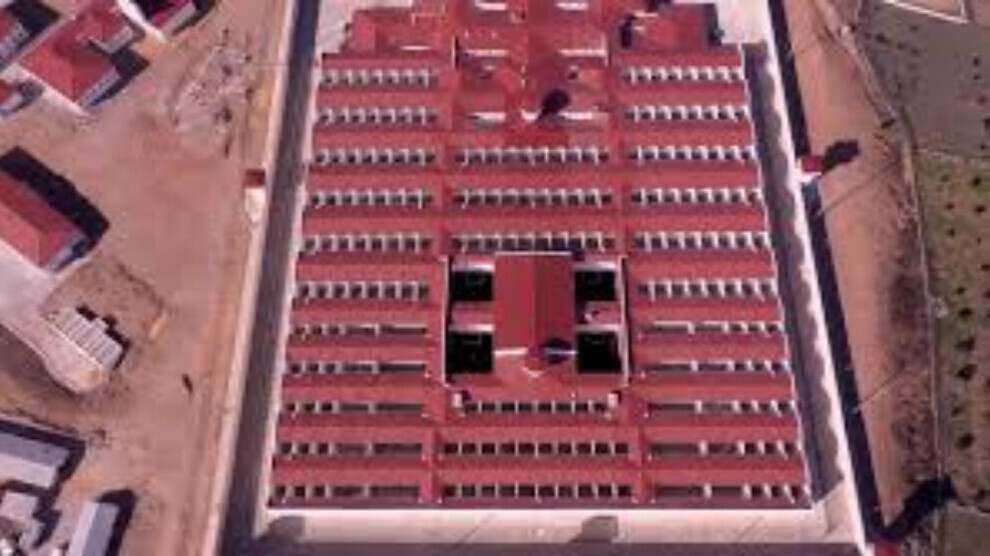‘Pit-type’ prisons are the new sites of torture
Thousands of prisoners are held in isolation in Y- and S-type ‘pit-type’ prisons, with no full data shared by the Ministry of Justice.
Thousands of prisoners are held in isolation in Y- and S-type ‘pit-type’ prisons, with no full data shared by the Ministry of Justice.

The Human Rights Association (IHD), in its 2025 report titled “High-Security Prisons and S-Type Facilities,” highlights that an isolation strategy is being imposed not only to physically restrain prisoners but also to psychologically break them.
Data from the Civil Society in the Penal System Association shows that Turkey’s 400 prisons, with an official capacity of 304,608, currently hold 416,927 inmates, a number that continues to rise daily. Instead of reforming its judicial system, the Turkish government keeps expanding the prison system. In recent years, the facilities that have drawn the most public concern are the so-called “pit-type” prisons, officially classified as Y- and S-type institutions. There are currently 13 Y-type, 22 high-security, and 7 S-type prisons across Turkey. Prisoners held in these facilities are subjected to absolute isolation.
The place where isolation deepens
A June 2023 report by the Contemporary Lawyers Association (ÇHD) included details based on interviews with three prisoners held in Erzurum Dumlu No. 1 Y-Type High-Security Prison. The findings reveal the following conditions:
* The prison has three floors.
* Attorney meeting rooms are completely enclosed.
* Prisoners are held in solitary cells, and neither the single nor triple-occupancy cells have separate ventilation areas.
* While ventilation spaces are present on different floors, prisoners are not taken outside at the same time due to partial visibility between the sections. There is absolutely no contact with prisoners held in cells located in the back corridor.
* Prisoners serving disciplinary sentences are taken to the ventilation yard alone.
* Access to social interaction rights is denied.
* The right to books is severely restricted, even books sent from other prisons are not delivered.
* Newspapers are not distributed on weekends.
* The food provided is extremely poor and unhealthy.
Many basic rights are being denied
Prisoners transferred to these facilities are told from the beginning that they are completely alone and that no one will hear their voices. Some of the isolation practices include:
* Being held in solitary cells
* Not being allowed to take letters or tea to the ventilation area
* Absence of windows in the cells
* Surveillance cameras installed in all areas, including bathrooms
* Total automation of all systems, preventing prisoners from communicating even with guards
* Communication restricted to megaphone use
* The single window opening to the ventilation area is blocked by iron bars and a curtain, making sunlight and the sky completely invisible
* Ventilation yards built like cages, surrounded by wire mesh
An isolation strategy is being implemented
The IHD 2025 report titled “High-Security Prisons and S-Type Facilities” states that prisoners are allowed outside for ventilation only one hour per day, and even that limited time is often arbitrarily restricted. The same report notes that even greeting a fellow inmate in the adjacent cell is considered a “disciplinary offense” and is punished accordingly. These conditions indicate the enforcement of an isolation strategy designed not only to physically contain prisoners but also to psychologically break them.
Extreme isolation is accompanied by severe restrictions on access to healthcare. According to the IHD report, prisoners must submit written requests for days before being allowed to visit the infirmary and most of these requests go unanswered. When inmates are transferred to hospitals, they are handcuffed and shackled during examinations, which not only violates medical ethics but also degrades human dignity. Such treatment renders the mere act of surviving within prison walls a growing threat to life itself.
The report also reveals that the sending of books, magazines, and letters is frequently obstructed without justification, and incoming publications are often confiscated. Disciplinary boards arbitrarily interpret “lack of remorse” to restrict visitation rights and phone calls, leading to total social isolation.
These intensifying conditions of isolation gradually devastate the prisoners’ mental and physical integrity, often with irreparable consequences. The report documents that some prisoners held in solitary confinement for prolonged periods suffer severe psychological breakdowns, while others are driven to suicide. Deprived of the most basic human needs, such as speaking to someone, being touched, or hearing another voice, individuals begin to lose the emotional and cognitive capacities that define what it means to be human.